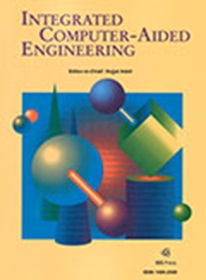通过斑块突出图观察三维点云深度神经网络的内部结构
IF 5.3
2区 计算机科学
Q1 COMPUTER SCIENCE, ARTIFICIAL INTELLIGENCE
引用次数: 0
摘要
三维点云深度神经网络(3D DNN)已取得显著成功,但其黑箱特性阻碍了它在许多安全关键领域的应用。突出图技术是观察黑箱内部并确定三维点云深度神经网络在识别点云时关注点的关键方法。现有的点云突出度方法可用于说明给定三维 DNN 的点云突出度。然而,上述临界点是替代性的,并不可靠。我们的实验结果表明,一个点之所以成为临界点,是因为它代表了一个特定的局部结构。然而,一个局部结构并不一定由某些特定点来代表,反之亦然。因此,讨论临界点所代表的局部结构的显著性(命名为片面显著性)比讨论某些特定点的显著性更有意义。基于上述动机,本文设计了一种黑盒算法来生成点云的斑块式显著性图。我们的基本思想是设计 "掩模构建-丢弃 "过程,通过对显著性接近的点进行聚类,自适应地匹配重要/不重要斑块的大小。在几个典型三维 DNN 上的实验结果表明,我们的片状显著性算法可以提供更好的视觉引导,比点状显著性地图更有效地检测出三维 DNN 的焦点所在。最后,我们将斑块式显著性图应用于对抗性攻击和后门防御。结果表明,改进效果显著。本文章由计算机程序翻译,如有差异,请以英文原文为准。
Look inside 3D point cloud deep neural network by patch-wise saliency map
The 3D point cloud deep neural network (3D DNN) has achieved remarkable success, but its black-box nature hinders its application in many safety-critical domains. The saliency map technique is a key method to look inside the black-box and determine where a 3D DNN focuses when recognizing a point cloud. Existing point-wise point cloud saliency methods are proposed to illustrate the point-wise saliency for a given 3D DNN. However, the above critical points are alternative and unreliable. The findings are grounded on our experimental results which show that a point becomes critical because it is responsible for representing one specific local structure. However, one local structure does not have to be represented by some specific points, conversely. As a result, discussing the saliency of the local structure (named patch-wise saliency) represented by critical points is more meaningful than discussing the saliency of some specific points. Based on the above motivations, this paper designs a black-box algorithm to generate patch-wise saliency map for point clouds. Our basic idea is to design the Mask Building-Dropping process, which adaptively matches the size of important/unimportant patches by clustering points with close saliency. Experimental results on several typical 3D DNNs show that our patch-wise saliency algorithm can provide better visual guidance, and can detect where a 3D DNN is focusing more efficiently than a point-wise saliency map. Finally, we apply our patch-wise saliency map to adversarial attacks and backdoor defenses. The results show that the improvement is significant.
求助全文
通过发布文献求助,成功后即可免费获取论文全文。
去求助
来源期刊

Integrated Computer-Aided Engineering
工程技术-工程:综合
CiteScore
9.90
自引率
21.50%
发文量
21
审稿时长
>12 weeks
期刊介绍:
Integrated Computer-Aided Engineering (ICAE) was founded in 1993. "Based on the premise that interdisciplinary thinking and synergistic collaboration of disciplines can solve complex problems, open new frontiers, and lead to true innovations and breakthroughs, the cornerstone of industrial competitiveness and advancement of the society" as noted in the inaugural issue of the journal.
The focus of ICAE is the integration of leading edge and emerging computer and information technologies for innovative solution of engineering problems. The journal fosters interdisciplinary research and presents a unique forum for innovative computer-aided engineering. It also publishes novel industrial applications of CAE, thus helping to bring new computational paradigms from research labs and classrooms to reality. Areas covered by the journal include (but are not limited to) artificial intelligence, advanced signal processing, biologically inspired computing, cognitive modeling, concurrent engineering, database management, distributed computing, evolutionary computing, fuzzy logic, genetic algorithms, geometric modeling, intelligent and adaptive systems, internet-based technologies, knowledge discovery and engineering, machine learning, mechatronics, mobile computing, multimedia technologies, networking, neural network computing, object-oriented systems, optimization and search, parallel processing, robotics virtual reality, and visualization techniques.
 求助内容:
求助内容: 应助结果提醒方式:
应助结果提醒方式:


